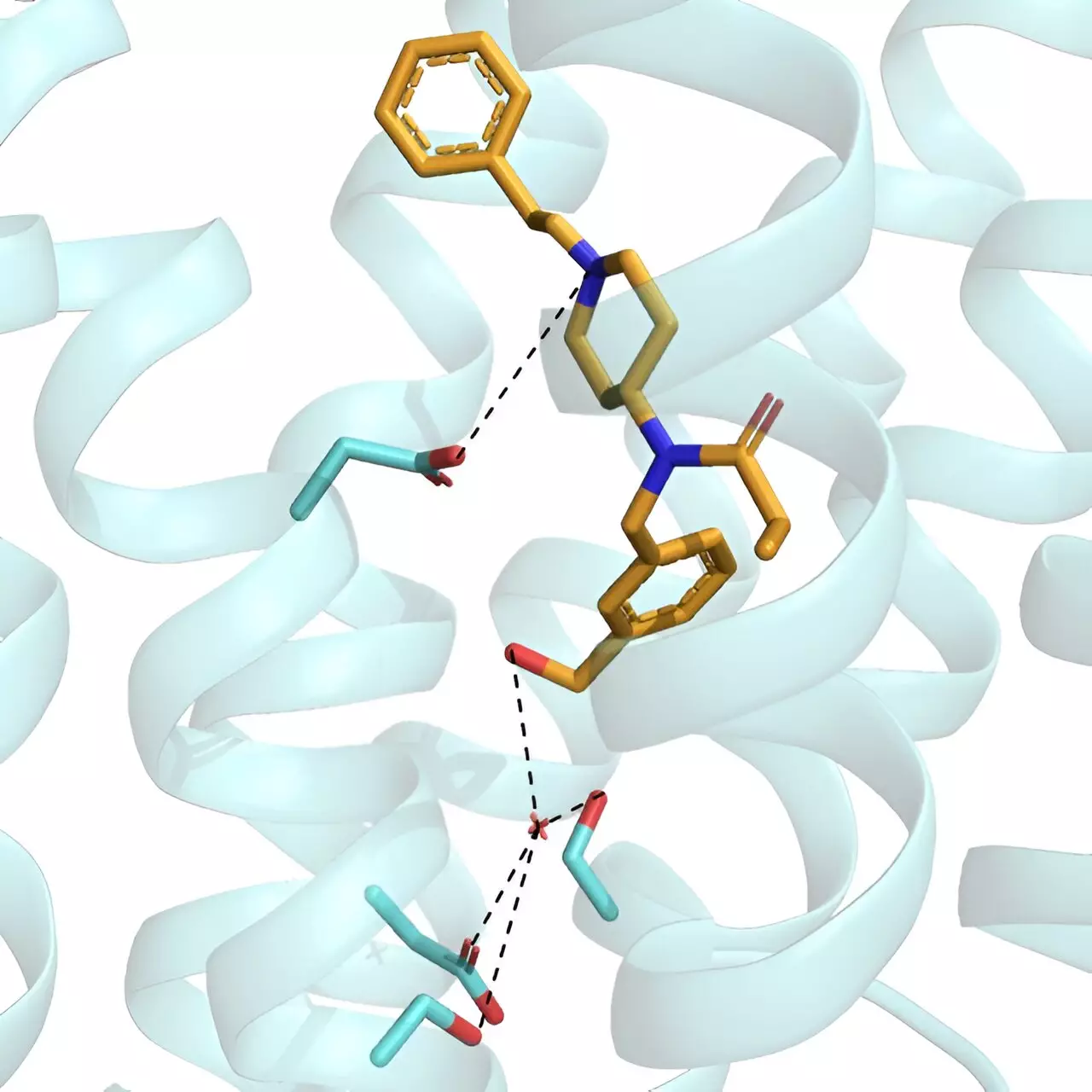The opioid epidemic has taken a devastating toll on communities worldwide, posing a significant challenge to public health. While opioids are acclaimed for their capacity to alleviate severe pain, they are equally notorious for their propensity to lead to addiction and catastrophic outcomes like overdoses. With increasing awareness of these dangers, researchers are under immense pressure to innovate ways to reduce the risks of opioid therapy. A recent study highlights a groundbreaking approach that could evolve the landscape of pain management, offering hope for safer alternatives.
Reimagining Pain Relief
The traditional approach toward designing opioid medications has been to focus on molecules that interact with the body’s opioid receptors at what is known as the “active site.” This is where our natural pain relief systems bind and function. However, this standard pathway is fraught with issues, primarily because it often leads to the classic side effects associated with opioid use, including respiratory depression and the risks of dependency and withdrawal. The innovative study, published in ACS Central Science, has unveiled an experimental opioid that employs a novel strategy by targeting a non-traditional site on the receptor.
This divergence from existing practices signifies a major leap in the quest for pain management solutions that do not come with the burdensome risks currently associated with opioids. By focusing on an unconventional binding site, researchers have identified a candidate, RO76, that may redefine how we perceive opioid safety and efficacy.
What Makes RO76 Special?
The journey to RO76’s discovery involved synthesizing and testing various compounds derived from fentanyl, one of the most potent opioids known to the medical world. In laboratory settings, RO76 demonstrated remarkable efficacy in suppressing pain comparable to morphine without inducing some of the lethal side effects typically associated with traditional opioids. This characteristic of RO76 is incredibly significant; it emanates from its ability to interact with opioid receptors differently than its classic counterparts, thus potentially mitigating the risk of respiratory issues, a common complication in overdose situations.
Moreover, animal studies indicated that when under opioid-blocking medication, subjects receiving RO76 experienced comparatively fewer withdrawal symptoms than those treated with morphine. This finding could potentially alter the lives of countless individuals battling chronic pain and their dependency on opioids, making RO76 a noteworthy breakthrough.
A New Avenue for Oral Administration
Notably, the research reveals that RO76 could be effective not just with parenteral administration but also when ingested orally. While traditional opioid medications often require injections due to their characteristics, the fact that RO76 shows similar pain-suppressing effects when taken by mouth opens up a new world of convenience and accessibility for patients. In a domain where patients are often reluctant to self-administer injections, this could be a game-changer in promoting compliance and easing the burden on healthcare providers.
The properties of RO76 indicate that those suffering from ongoing pain might finally see a solution that aligns more closely with their needs—relief without the oppressive weight of addiction and withdrawal.
The Road Ahead
Despite the promising results associated with RO76, the transition from experimental to practical use is treacherous and requires further validation through extensive clinical trials. As researchers refine their methodologies and enhance RO76’s formulation, they must remain vigilant about the long-term implications of any new opioid alternative. Given the intense scrutiny and regulatory environment surrounding opioid medications, thorough safety evaluations must accompany any claim of efficacy.
Nevertheless, the groundwork laid by this research is undeniably significant. As the world grapples with the ramifications of the opioid crisis, innovative alternatives like RO76 represent a beacon of hope. If successful, this compound could provide pain relief that avoids the deadly pitfalls of addiction and overdose, potentially revolutionizing pain management for future generations. The winds of change are blowing, and with them, there lies hope for a safer and more effective approach to combating the pervasive pain that affects so many lives.

